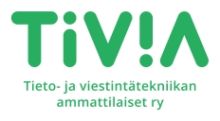Better leadership = better design

![]() Over the past 20 or so years, I’ve had the pleasure of working with at least a 100 different designers of various backgrounds, seniority levels and expertise areas.
Over the past 20 or so years, I’ve had the pleasure of working with at least a 100 different designers of various backgrounds, seniority levels and expertise areas.
Today, much of the discussion about designers centers around technical requirements (e.g. how do I become better at service design), functional requirements (e.g. how do I facilitate workshops better) or process requirements (how do I work better with my clients, team, agency etc.). All are no doubt important topics, but perhaps we’re neglecting a key component that is crucial to the well-being and thus output of designers: leading them.
So, based on my experiences, here are 4 simple points that might help both designers to reflect on their work and their supervisors to help each designer reach his / her full potential.
1. Say “no” to a one-size-fits-all leadership approach
Design isn’t a single field but rather a collection of practices that together constitute the larger profession of design. As such, design cannot be taught at any single institution and thus, designers come from a variety of backgrounds. It’s also not uncommon for designers to have little to no formal training. All this leads to a situation where a very rigid, strict leadership framework – typically taught in business schools – cannot work, as it will lack the nuances to accommodate for all the differences among designers. So, you should never actually lead designers, but always lead an individual designer.
2. Design isn’t an output or end-product – it’s an input for value creation
One of the most important realizations for designers is to see their work as an ongoing journey of constant improvement, as new user information arises or client needs change. So, design should never solely be about delivering or shipping some concrete entity (e.g. wireframes), although these are no doubt important, but rather it should be a holistic approach for steady incremental renewal. Evolution may not produce fancy trophies at award ceremonies but it always trumps short-term revolutions, as client value can only be generated as a function over time.
3. Who holds the data has the power
Much has already been said (and done) in terms of bringing data, analytics and insights into the profession and daily practice of design. The so called data driven design movement isn’t anything new anymore. Although the importance of using data to guide design decisions will only continue to grow, maybe we should be looking for the next wave to ride? It’s no secret that modern AI and machine learning techniques will proliferate design and fundamentally change the nature and characteristics of design over the next few years. Developing user personas, sitemaps and UIs is quickly becoming redundant as modern simulation practices take over. So, designers should be moving not to where the ball currently is, but to where it will be played shortly.
4. Full-stack design, but not over the brim
Although world-class specialists will always be valued and appreciated, it’s a known fact that the majority of design work is done by generalists with broad skills. So, while specialization is a necessity, it alone rarely forms the foundation for success. On the other hand, you don’t want to go to the other extreme of the continuum by trying to manage everything from designing strategies to coding CSS. There does appear to be a sweet spot for the majority of designers somewhere in the middle, where you cover a few areas well enough.
Conclusion
So, there you have it – 4 simple points on how to (better) lead digital designers. Hopefully these points will come in handy, while we’re waiting for the whole design profession to mature and saturate. Go lead, but think differently before you do and remember who you’re leading, and why!
















































